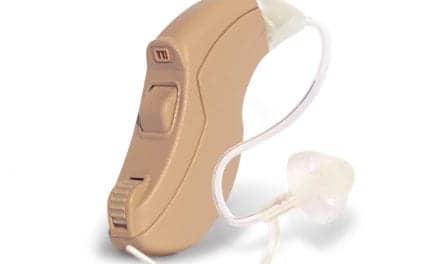Johnson & Johnson Medical Devices Companies* announced that Acclarent, Inc—a company that develops minimally-invasive Ear, Nose, and Throat (ENT) technologies—has received clearance from the US Food and Drug Administration (FDA) to expand the indication for the Acclarent AERA® Eustachian Tube Balloon Dilation System to include its use in patients as young as 18.1 The device was previously cleared only for adults aged 22 and older.
In addition, recent evidence shows the procedure may be performed with local and/or topical anesthesia; before, only general anesthesia had been studied.1,2 The use of local anesthesia may provide benefits including cost savings and time efficiencies for suitable patients.
Eustachian Tube Dysfunction (ETD) is a blockage of the narrow tube that connects the throat to the middle ear, and helps the ears drain fluid and equalize pressure. The condition, which affects up to 5% of adults,3 is often marked by ear pain, pressure in the ears, and dulling or loss of hearing. Previously, ETD was treated with medication, or surgery with ear tubes. However, failure to correct the underlying problem may lead some patients to develop chronic symptoms, persistent complaints, or more serious conditions such as middle ear effusion, infections, and related long-term complications.
Acclarent AERA® is what the company reports as the “first and only” device specifically designed to help treat patients with persistent ETD. The device is designed to leverage flexible technology to adapt to variations in ear anatomy to help ENT surgeons minimize trauma through precise access and positioning. More than 9,000 patients have been treated with the Acclarent AERA® since it was first granted clearance by the FDA in 2016.4
“This expanded indication of Acclarent AERA®, and the data regarding the procedure under local anesthesia, will help expand treatment options and bring relief to more patients with persistent ETD,” said Dr Marc Dean, a board-certified otolaryngologist in private practice and the cofounder and chairman of the Vitruvio Institute for Medical Advancement in Fort Worth, Texas. “The device provides a minimally invasive option for ENT surgeons to treat persistent ETD at its source.”
Results from a recent clinical study demonstrated a 99.7% technical success rate in Eustachian tubes dilated with the Acclarent AERA® device. Additionally, there were zero reported serious device- or procedure-related adverse events,5 and patients reported greater improvement in quality of life measures.
See how the device works here: https://www.youtube.com/watch?v=hJMort6YCI4
*Comprising the surgery, orthopedics’, and cardiovascular businesses within Johnson & Johnson’s Medical Devices’ segment.
Caution: Federal (US) law restricts the sale, distribution, or use of the ACCLARENT AERA® by or on the order of a physician who is trained in the use of Acclarent technology. Eustachian tube balloon dilation has associated risks, including tissue and mucosal trauma, infection, or possible carotid artery injury. Prior to use, it is important to read the Instructions for Use and to understand the contraindications, warnings, and precautions associated with these devices.
References
1. Acclarent IFU005146 Rev E, Acclarent AERA® Eustachian Tube Balloon Dilation System instructions for Use. 2018.
2. Luukkainen V, Kivekäs I, Hammarén-Malmi S, et al. Balloon eustachian tuboplasty under local anesthesia: Is it feasible? Laryngoscope. 2017;127(5):1021-1025.
3. Ockermann T, Reineke U, Upile T, Ebmeyer J, Sudhoff HH. Balloon dilatation eustachian tuboplasty: A clinical study. Laryngoscope. 2010;120(7):1411–1416.
4. Acclarent AERA® Procedure Data Documented on January 18, 2018.
5. Poe D, Anand V, Dean M, et al. Balloon dilation of the eustachian tube for dilatory dysfunction: A randomized controlled trial. Laryngoscope. 2017.
Source: Acclarent, Inc
Image: Acclarent, Inc






Need to find a md that will dialate my eustasian tubes. Constant pressure headaches. Forced to retire since couldnt function at work. Use all meds..please help
I think I also have ETD. I suffer from constant dizziness, tinnitus, and a stopped up feeling especially in my left ear. It has caused a clinical depression for me and I found this doctor on the Internet last night. I live in NC and this doctor is in Durham who is approved to do this procedure. His name is Dr. David Kaylie. I am going to call him tomorrow to make an appointment.